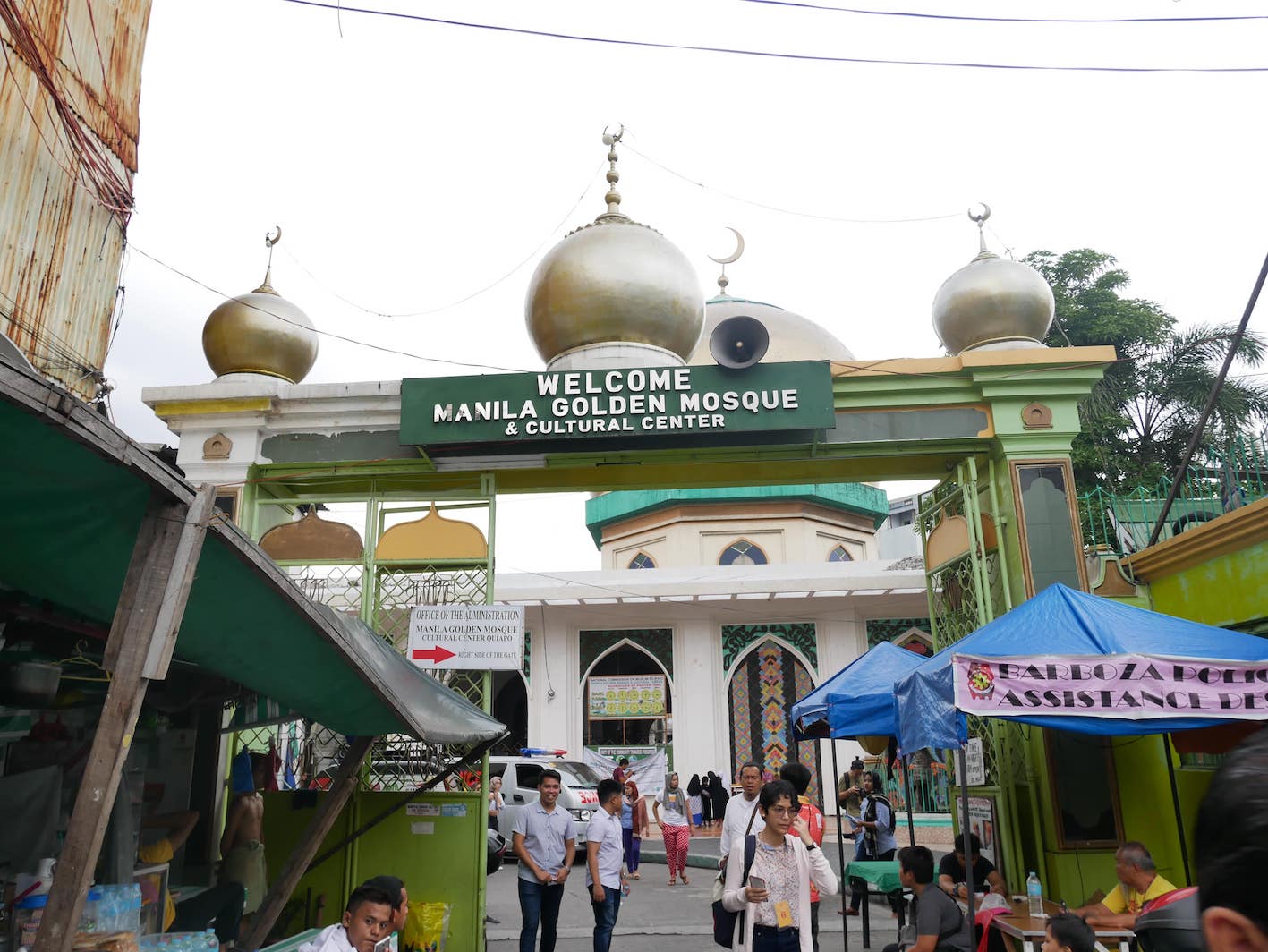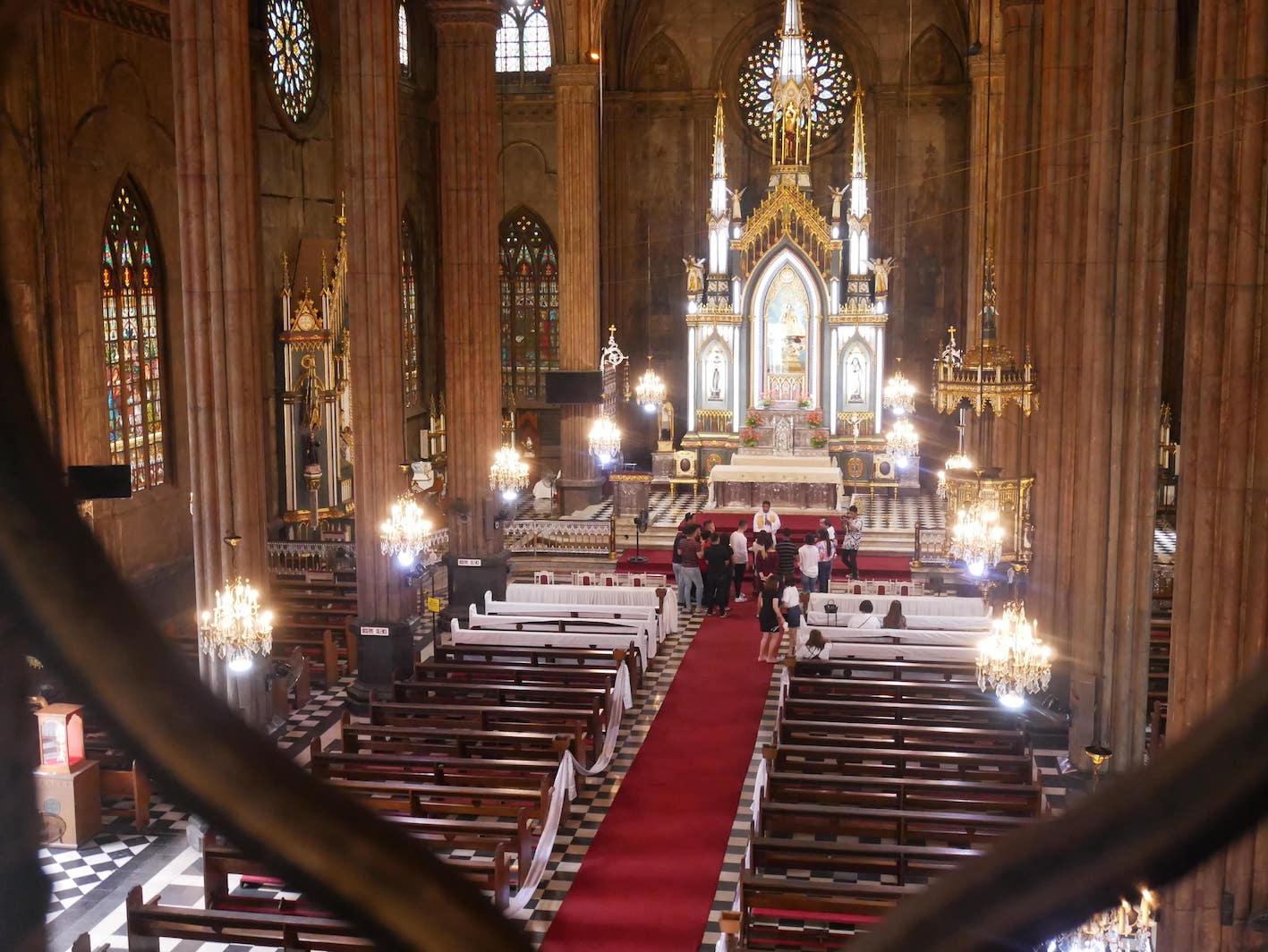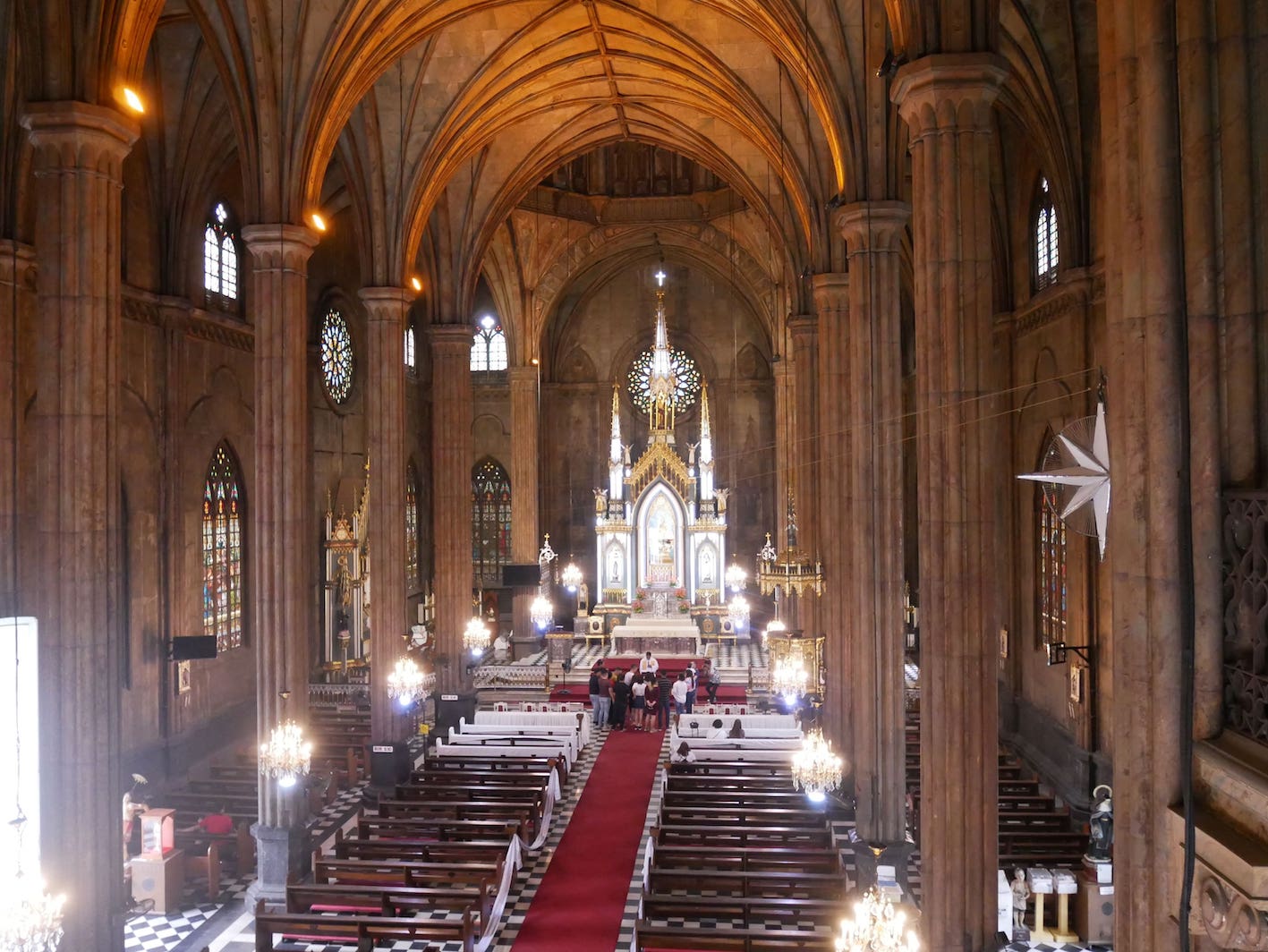In the 1800s, Manila was the center of commerce and art in the Philippines, but as its population grew, so did the city’s pickpockets, traffic, and pollution, resulting in some of the infamously seedy areas we see today. But a new tour called Bukas Quiapo — launched in September of last year — aims to reclaim the city’s former glory by showcasing its history through landmarks in the Quiapo district.
Organized by the San Sebastian Basilica Conservation and Development Foundation, it’s the first community-led tour that brings visitors to Quiapo’s little known and forgotten gems, and encompasses 12 stops such as the Bahay-Nakpil Bautista, San Sebastian Basilica, the Manila Golden Mosque and Cultural Center, and the Quiapo Church. The entire thing from beginning to end typically takes about five hours.
Coconuts Manila attended an abbreviated version of the tour along with other members of the media last month. Our guides were Annabel Hatol, a stay-at-home mother, and Dennis Barcelo, a heritage advocate who runs his own online business.
Hatol and Barcelo brought us to three stops in the tour, and the main takeaway from our time with them is this: Each stop is rich in history in its own way, and showed us that there’s more to Quiapo than the dirt and grime that many of us typically associate with it.
Bahay Nakpil-Bautista

Our first stop was Bahay Nakpil, a grand old house built in 1913 and the only heritage home in Quiapo that’s currently open to the public. Its original owners were philanthropist Ariston Bautista and his wife Petrona Nakpil. The couple did not have any children, and with the surplus of space, they took in Gregoria de Jesus, the lakambini (muse) of the Katipunan revolutionary movement; her husband and Petrona’s brother Julio Nakpil, a Katipunan general; and the couple’s six children. Before getting married to Nakpil, De Jesus was married to Andres Bonifacio, the founder of the Katipunan who was executed by other members of the revolutionary group.
The house was designed by Arcadio Arellano and it’s one of the best examples of a home done in the Secessionist style: The first story was built in stone, while the second story is made of wood. Its sliding windows provide a glimpse of the congested street below, as well as a creek that has unfortunately seen better days.

Despite the decay surrounding the house, Bahay Nakpil is a beauty, and has remained well-preserved through the years. There’s a bedroom with a grand four-poster bed, while on another floor is a library full of Filipiniana books. Because de Jesus was one of the Katipunan’s founders, a corner of the house displays the Katipunan flag along with the Philippine flag.
It was interesting to learn about the Nakpil family and the people who often visited their home. Juan Nakpil, Julio and de Jesus’ son, became the first National Artist for Architecture and is responsible for designing one of the early iterations of the Quiapo Church. Celebrated Filipino artist and activist Juan Luna, we were told, was a close friend of the Nakpil family and would often visit the home.
Next stop, the Golden Mosque.
Manila Golden Mosque and Cultural Center

The Manila Golden Mosque is the largest mosque in Manila. It was built in 1976 under the supervision of then-first lady Imelda Marcos in preparation for the visit of then-Libyan President Muammar al-Gaddafi. Gaddafi’s visit did not push through, but the mosque led Muslim Filipinos to establish a community surrounding its periphery. Many of those who now live near the mosque are Maranaos, Tausugs, and Maguindanaons from the southern Philippines.

The area outside the mosque was quite busy during our visit — it was a Saturday — and our group was immediately surrounded by friendly children curious to see why we were there. Before we were led inside the mosque, the women in our group were made to wear an abaya, which covered up the hair, neck, and arms.

Once inside the mosque, we found the building mostly empty, save for some men sleeping on the floor. Though the structure itself looks a bit run down, we could still appreciate the Islamic art and architectural design that’s within its walls — its very presence is a testament to the cultural diversity of the Quiapo district.
After some time spent in the mosque, Hatol and Barcelo brought us to San Sebastian Basilica, the country’s only all-metal church.
San Sebastian Basilica

This Neo-Gothic church is nestled on a quiet street, and is currently going through a massive refurbishment that is slated for completion by 2021. Inaugurated in 1891, it’s a beautiful structure whose current design is an interesting composite contributed by artists (and even companies) from several countries. It was designed by Spanish architect Genaro Palacios, who worked with Societe Anonyme de Travaux Publics, the Belgian company that built the Orient Express. The church’s carefully crafted stained glass windows, on the other hand, were created by the German firm Henri Oidtman.
Inside are paintings of religious icons made by the Academia de Pintura, Dibujo y Grabado — the same school where Juan Luna trained.
It’s beautiful, yes, but the structure’s foundation is corroding, and the paintings on its walls and its dome are fading. Numerous holes in its glass-stained windows have also become apparent, too. Our guides tell us that the basilica is getting a new lease on life, however, thanks to funds from organizations and endowments such as the U.S. State Department’s Ambassador’s Fund for Cultural Preservation.
At present, the church is undergoing renovation works so that the damages in the structure can get repaired. It’s a painstaking process, and because there are very few metal churches in the world, the foundation had to rely on the help of experts and architecture students from overseas, according to Samantha Pacardo, the project manager of the renovations.
How to sign up
The San Sebastian Basilica marked the end of our visit, but those interested in seeing the tour for themselves can book the entire 12-stop guided tour, which starts at PHP1,500 (US$28.94) per person. Proceeds of the tour will go to everyone involved, including the sites and the tour guides.
Our guides, Hatol and Barcelo, were great — they were chirpy, knowledgeable, and energetic throughout our entire four-hour media briefing and tour.
After the tour, Hatol told us that she went through rigorous training to become a guide: “There were 20 of us during the training, until at the end it was just me and Dennis. I did it because it was my way of contributing to the community. During that time, my husband passed away and I thought the training was a good way to move on,” Hatol said.
Barcelo, on the other hand, is a fan of anything related to Old Manila: “Any topic related to Manila in the 1800s, I’m interested. This tour is my contribution to the growth of the city of Manila. When people join this tour, they realize that Quiapo could be beautiful,” he said.
FIND IT:
Bukas Quiapo Tour
San Sebastian Basilica Conservation Foundation office, 2/F San Sebastian Convent, San Sebastian Basilica
Phone: (02) 708 5122
FB: @bukasquiapotours | IG: @savessbasilica
Read more Coconuts Manila articles here.





Reader Interactions